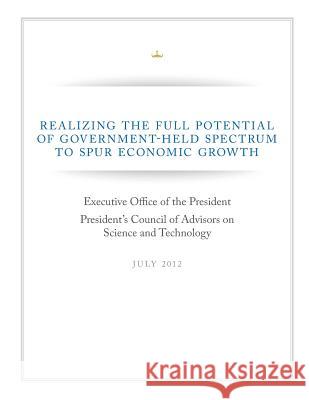Realizing The Full Potential of Government-Help Spectrum to Spur Economic Growth » książka
Realizing The Full Potential of Government-Help Spectrum to Spur Economic Growth
ISBN-13: 9781500547387 / Angielski / Miękka / 2014 / 144 str.
The growth of wireless technology in the past few years has been nothing short of astonishing. The advent of smartphones, tablets, and many other devices has made mobile information access a central feature of our lives. In the coming years, access to spectrum will be an increasingly important foundation for America's economic growth and technological leadership. In 2011, global mobile data more than doubled for the fourth year in a row. The number of devices connected to mobile networks worldwide is around five billion today, and could rise to 50 billion by 2020. By that time, wireless technologies are expected to contribute $4.5 trillion to the global economy through the expansion of existing business and the creation of new opportunities. This growth has created unprecedented demand for commercial access to wireless spectrum. At the same time, U.S. Federal spectrum needs are also rising. For example, the number of unmanned aerial systems (UAS) operated by the Department of Defense (DOD) has drastically increased from 167 to nearly 7500 from 2002 to 2010, and the systems are carrying larger payloads and collecting increased volumes of intelligence, surveillance, and reconnaissance (ISR) data. This has resulted in a dramatic increase in the number of sorties flown and domestic training requirements, all of which require spectrum. To enhance U.S. economic competitiveness, create jobs, improve the quality of Americans' lives, and provide an environment where innovation thrives and new capabilities are secure and trustworthy, President Obama issued a Presidential Memorandum in 2010 entitled "Unleashing the Wireless Broadband Revolution" requiring that the Federal Government make available 500 MHz of Federal or non-federal spectrum for both mobile and fixed wireless broadband use by commercial users within 10 years. This President's Council of Advisors on Science and Technology (PCAST) study responds to the policy challenges and technological opportunities that have occurred in the two years since this memorandum was signed.
Zawartość książki może nie spełniać oczekiwań – reklamacje nie obejmują treści, która mogła nie być redakcyjnie ani merytorycznie opracowana.











